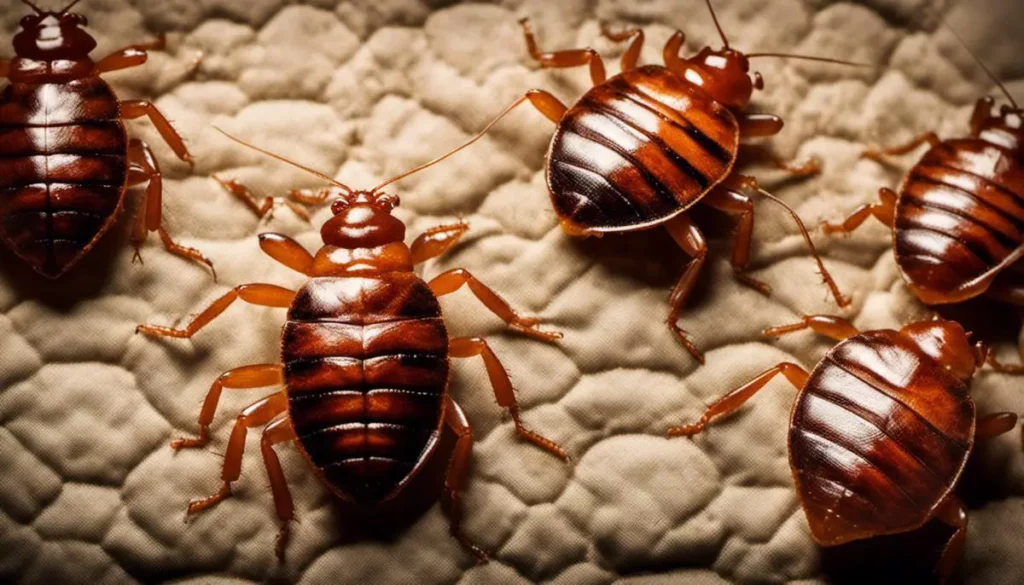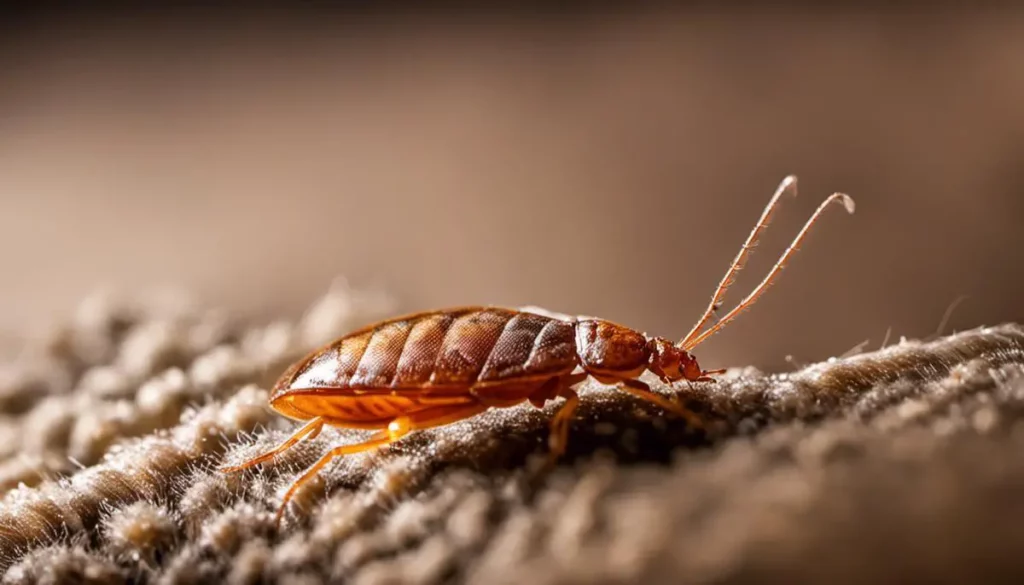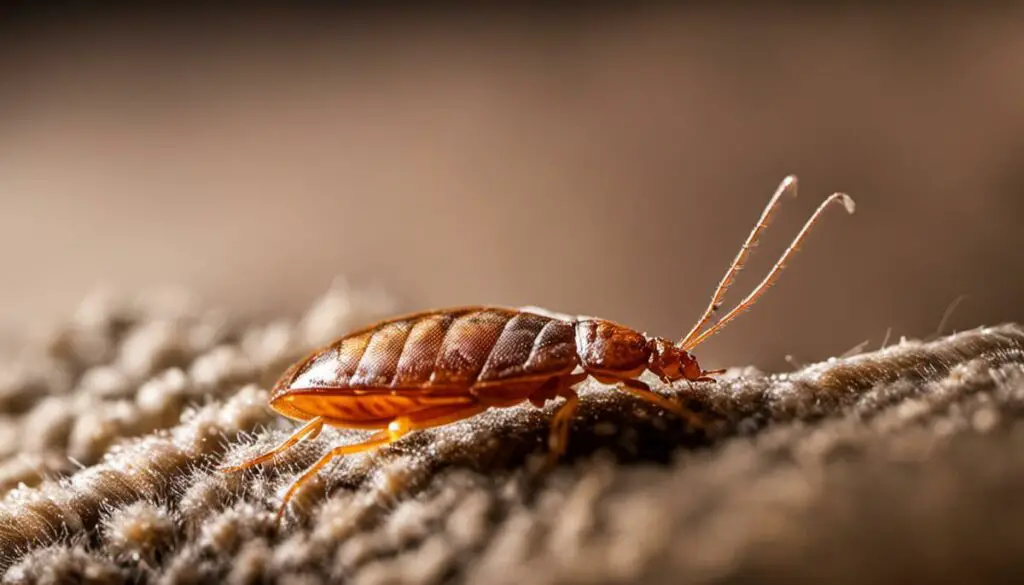Bedbugs— just the name alone is enough to make anyone’s skin crawl. They lurk in the corners of our homes, invisible to the naked eye, yet leaving telltale signs of their presence. Piqûres, fecal spots, eggs, and shed skins – all evidence of an irritating and often stressful infestation.
To effectively manage and eventually eliminate these unwanted guests, you must first understand them. This involves diving into the biology of bedbugs – their size, appearance, life cycle, and their behaviors. This initial understanding forms the foundation from which effective control strategies are built.
Once you can recognize a bedbug from its look, size, and the kind of mark it leaves, the next challenge of detection comes. Bedbugs are furtive creatures, and revealing them demands a keen eye and an understanding of their hiding spots.
Spotting signs of their infestation is crucial, from identifying their bites and their pattern to knowing their fecal spots, eggs, and shed skins. With knowledge in hand, you’ll be better equipped to take early action and prevent a full-blown infestation.
Understanding Bedbugs
Delving into the Intriguing Biology and Life Cycle of Bedbugs
Roughly the size of an apple seed, bedbugs, also known as Cimex lectularius, are tiny insects that feed chiefly on human blood. Over the years, bedbug infestations have become common globally, earning these pesky bugs surplus attention. What makes these bugs so captivating to study? Well, it’s their unique biological characteristics and life cycle that set them apart. Let’s delve in and unravel the world of bedbugs.
Bedbugs are wingless and boast an oval shape, elongating further while feeding. Their color varies from brown to reddish-brown, depending on when they last fed. They possess a proboscis (beak-like structure) neatly hidden beneath their body, which they employ to pierce the skin of their unsuspecting host and withdraw blood.
The grim fact about bedbugs that truly intrigues every hobbyist is their astonishing ability to survive without feeding for almost a year at room temperature! Their impressive survival skills are attributed to their slow metabolic rate, which also contributes to their average lifespan of around 10 months, though in some cases, bedbugs have been known to live for over a year.
Perhaps what further adds to their peculiarity is their heightened nocturnal activity. Bedbugs are primarily active during the night and usually reach maximum activity just before dawn – quite the night owls they are!
For hobbyists prowling to understand their reproducibility, understanding the bedbug life cycle is critical. Bedbugs lay their eggs in small cracks and fissures, laying up to 500 eggs throughout their lifetime. The eggs, which are about 1mm in length, are coated in a sticky substance, fastening them securely to the surface where they’re laid.
The life cycle of a bedbug consists of six stages – an egg stage, followed by five nymph stages, and finally, the adult stage. Just like a snake, bedbugs molt their skin at each stage, requiring a blood meal to shed and grow.
The egg stage is the initial phase, lasting around two weeks before the first nymph emerges. As the nymphs progress through their stages, they grow in size, starting from approximately 1.5mm and eventually reaching about 4.5mm in length by the last nymph stage.
The transformation from a nymph to an adult takes almost five weeks under favorable conditions and with enough feeding opportunities. Adult bedbugs can live for roughly 2-4 months but can stretch their lifespan in adverse conditions by entering a dormant state, another striking feature of their survival tactics!
Understanding the biology and life cycle of bedbugs can go a long way in informing effective prevention and control measures. So, the next time you spot a bedbug, remember its unique characteristics – just the simple apple-seed-sized creature harboring a labyrinth of biological mysteries within itself!
Gaining knowledge about these peculiar creatures certainly presents an intriguing hobby, leading us to appreciate even the smallest wonders of nature, albeit their nuisance! So, keep exploring, keep learning, and remember. Every creature has a story to unfold, even the tiny bedbug hiding beneath your sheet.

Identifying Bedbug Infestations
Heading: Spotting the Hidden Foes: Identifying Signs of a Bedbug Infestation
Nothing short of a formidable adversary, the humble bedbug constantly reminds us of how complex and fascinating the microscopic world around us can be. While our prior discussions delved into their unassuming elegance and underappreciated existence, today, we channel our inner detectives to help you recognize signs of a bedbug infestation.
First up is the most evident tell-tale sign: actual sightings of the creature. Given their nocturnal routines, spotting a bedbug during the day could indicate a severe infestation. They’re masters of hide-and-seek, preferring insubstantial crevices and dark, cozy spaces. Learning to distinguish their unique shape and size becomes crucial at this stage.
Next up is the creepy “bedbug dirt.” What is, you might ask? When bedbugs digest their blood meals, they excrete small, black, or dark red spots, often seen on your sheets or mattress. This can resemble tiny ink blots or scattered dots. Always keep an eye out for such unprecedented stains on your bed.
Skin sheddings serve as another sign of bedbug activity. The intricate process of metamorphosis from nymph to adult involves shedding the exoskeleton several times. These shed skins look like lighter and translucent empty shells, exactly mimicking the appearance of the bug.
One of the more disturbing signs is the presence of small, itchy welts on your skin. Bedbugs make small, clean bites and can leave clusters or lines of red, irritated welts. While other creatures cause similar reactions, remember, bedbugs typically dine while you’re asleep, so a fresh bite in the morning could be from one of these unwelcome guests.
Being insidious creatures, sometimes the only sighting might be through your nose. Yes, an infestation often comes with a distinctive smell! Descriptions range from sweet-ish and musty to an aroma of rotten raspberries or dirty laundry. If you notice an unexplained, unusual odor in your bedroom or living area, it may be time for some investigation!
Last but not least, check for bugs in unexpected areas. A substantial population can expand beyond the bed, exploring your bedside tables, loose wallpaper, and even electrical outlets!
Evidence of bedbug infestation is often subtle, but with a keen eye and knowledge armed, a possible intrusion need not turn into a full-blown invasion. As with much in life, understanding and early detection are quintessential in managing these inherently fascinating yet uninvited guests, the bedbugs. Remember, when it comes to bedbugs, it’s the detective in you that gets to save the day!

Bedbug Treatment Methods
Moving onwards! Now that this relentless enemy has been detected and identified, it’s time for a battle strategy. Effective treatment for a bedbug infestation requires a comprehensive approach – not just one, but several methods combined for the maximum effect. Let’s get down to the nitty-gritty of it.
Method 1: Heat Treatment
Bedbugs are survivors, but every critter has a kryptonite, and for bedbugs, it’s heat. They can’t withstand temperatures above 118°F (48°C). An immediate solution could involve washing clothing and bed linens in a high-heat setting. Additionally, you might consider using a steamer for furniture and mattresses. Professional exterminators also offer whole-room or whole-home heat treatment, which can be incredibly effective.
Method 2: Cold Treatment
On the opposite end of the spectrum, bedbugs also struggle with freezing cold temperatures. By placing infested items in a freezer at below 0°F (-18°C) for at least four days, you can defeat these unwelcome guests. This method might be more practical for smaller items, but it offers a non-toxic, pesticide-free option.
Method 3: Pesticide Spray
There’s a myriad of sprays available on the market, some more potent than others. For a heavy infestation, you may require a professional-grade pesticide. Always follow the instructions closely and remember retreating might be necessary as bedbugs can develop resistance, and their eggs are especially resistant.
Method 4: Diatomaceous Earth
A natural option is Diatomaceous Earth (DE), a powdery substance lethal to bedbugs but harmless to humans and pets. It works by dehydrating the bugs as they cross over it. Sprinkle this around beds, furniture, and even in cracks and crevices. Bugs will die within a few hours to a few days. Keep in mind it must stay dry to work correctly.
Method 5: Professional Pest Control
When the situation is beyond control, it’s high time to call in the guns – the professionals. They have more potent tools and extensive training in this bug-busting business. Don’t hesitate to make this call; wasting time may allow the infestation to multiply intensely.
Remember, treating a bedbug infestation is a marathon, not a sprint. There’s no one-size-fits-all strategy, and each method may need to be repeated to ensure success. Make sure to follow through completely to stop the life cycle of these pests. Happy hunting!

While understanding bedbugs and identifying their traces takes us halfway on the path to liberation, the journey’s end lies in treatment and preventive measures. The choices are vast and varied – chemical methods using pesticides, non-chemical strategies such as heat treatment, and the necessary preventive steps. The key here is understanding when and how to utilize them and applying the methods safely and effectively. Armed with this information, you can reclaim your home from these resilient pests and rest easy, knowing you’ve removed not just the bugs but the stress and discomfort they bring.
After all, there’s nothing more peaceful than a bug-free home. Remember, eradicating bedbugs is not an overnight process. It demands time, patience, and understanding. But with the right knowledge, tools, and methodologies, you can free your home of these unwelcome guests and ensure they’re barred from future visits. Here’s to peaceful and bedbug-free nights ahead!

